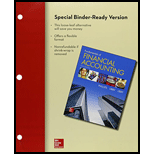
Loose-leaf for Fundamentals of Financial Accounting with Connect
5th Edition
ISBN: 9781259619007
Author: Fred Phillips Associate Professor
Publisher: McGraw-Hill Education
expand_more
expand_more
format_list_bulleted
Concept explainers
Question
Chapter 8, Problem 8.13E
1.
To determine
The written off amount of accounts receivable during the year 2013.
2.
To determine
The receivables turnover ratio of Company M for the current year.
3.
To determine
To identify: Whether collectability ofCompany M’s accounts receivable is improved or deteriorated in 2013 relative to the previous year.
Expert Solution & Answer
Want to see the full answer?
Check out a sample textbook solution
Students have asked these similar questions
Help me
?
The straight lines method is ?
Chapter 8 Solutions
Loose-leaf for Fundamentals of Financial Accounting with Connect
Ch. 8 - What are the advantages and disadvantages of...Ch. 8 - Prob. 2QCh. 8 - Which basic accounting principles does the...Ch. 8 - Using the allowance method, is Bad Debt Expense...Ch. 8 - What is the effect of the write-off of...Ch. 8 - How does the use of calculated estimates differ...Ch. 8 - Prob. 7QCh. 8 - What is the primary difference between accounts...Ch. 8 - What are the three components of the interest...Ch. 8 - Prob. 10Q
Ch. 8 - Does an increase in the receivables turnover ratio...Ch. 8 - What two approaches can managers take to speed up...Ch. 8 - When customers experience economic difficulties,...Ch. 8 - (Supplement 8A) Describe how (and when) the direct...Ch. 8 - (Supplement 8A) Refer to question 7. What amounts...Ch. 8 - 1. When a company using the allowance method...Ch. 8 - 2. When using the allowance method, as Bad Debt...Ch. 8 - 3. For many years, Carefree Company has estimated...Ch. 8 - 4. Which of the following best describes the...Ch. 8 - 5. If the Allowance for Doubtful Accounts opened...Ch. 8 - 6. When an account receivable is recovered a....Ch. 8 - Prob. 7MCCh. 8 - 8. If the receivables turnover ratio decreased...Ch. 8 - Prob. 9MCCh. 8 - Prob. 10MCCh. 8 - Prob. 8.1MECh. 8 - Evaluating the Decision to Extend Credit Last...Ch. 8 - Prob. 8.3MECh. 8 - Prob. 8.4MECh. 8 - Recording Write-Offs and Bad Debt Expense Using...Ch. 8 - Determining Financial Statement Effects of...Ch. 8 - Estimating Bad Debts Using the Percentage of...Ch. 8 - Estimating Bad Debts Using the Aging Method Assume...Ch. 8 - Recording Bad Debt Estimates Using the Two...Ch. 8 - Prob. 8.10MECh. 8 - Prob. 8.11MECh. 8 - Recording Note Receivable Transactions RecRoom...Ch. 8 - Prob. 8.13MECh. 8 - Determining the Effects of Credit Policy Changes...Ch. 8 - Prob. 8.15MECh. 8 - (Supplement 8A) Recording Write-Offs and Reporting...Ch. 8 - Recording Bad Debt Expense Estimates and...Ch. 8 - Determining Financial Statement Effects of Bad...Ch. 8 - Recording, Reporting, and Evaluating a Bad Debt...Ch. 8 - Recording Write-Offs and Recoveries Prior to...Ch. 8 - Prob. 8.5ECh. 8 - Computing Bad Debt Expense Using Aging of Accounts...Ch. 8 - Computing Bad Debt Expense Using Aging of Accounts...Ch. 8 - Recording and Reporting Allowance for Doubtful...Ch. 8 - Recording and Determining the Effects of Write-Off...Ch. 8 - Prob. 8.10ECh. 8 - Recording Note Receivable Transactions, Including...Ch. 8 - Recording Note Receivable Transactions, Including...Ch. 8 - Prob. 8.13ECh. 8 - Prob. 8.14ECh. 8 - Prob. 8.15ECh. 8 - Prob. 8.16ECh. 8 - (Supplement 8A) Recording Write-Offs and Reporting...Ch. 8 - Recording Accounts Receivable Transactions Using...Ch. 8 - Prob. 8.2CPCh. 8 - Recording Notes Receivable Transactions Jung ...Ch. 8 - Accounting for Accounts and Notes Receivable...Ch. 8 - Prob. 8.5CPCh. 8 - Recording Accounts Receivable Transactions Using...Ch. 8 - Prob. 8.2PACh. 8 - Prob. 8.3PACh. 8 - Accounting for Accounts and Notes Receivable...Ch. 8 - Analyzing Allowance for Doubtful Accounts,...Ch. 8 - Recording Accounts Receivable Transactions Using...Ch. 8 - Interpreting Disclosure of Allowance for Doubtful...Ch. 8 - Recording Notes Receivable Transactions Stinson...Ch. 8 - Accounting for Accounts and Notes Receivable...Ch. 8 - Prob. 8.5PBCh. 8 - Recording and Reporting Credit Sales and Bad Debts...Ch. 8 - Prob. 8.2COPCh. 8 - Recording Daily and Adjusting Entries Using FIFO...Ch. 8 - Prob. 8.1SDCCh. 8 - Comparing Financial Information Refer to the...Ch. 8 - Ethical Decision Making: A Real-Life Example You...Ch. 8 - Critical Thinking: Analyzing the Impact of Credit...Ch. 8 - Using an Aging Schedule to Estimate Bad Debts and...Ch. 8 - Accounting for Receivables and Uncollectible...
Knowledge Booster
Learn more about
Need a deep-dive on the concept behind this application? Look no further. Learn more about this topic, accounting and related others by exploring similar questions and additional content below.Similar questions
- How do companies account for their investment in joint ventures ?arrow_forwardThe learning curve concept suggest?arrow_forwardIf the average age of inventory is 90 days, the average age of accounts payable is 60 days, and the average age of accounts receivable is 65 days, the number of days in the cash flow cycle is__ days.arrow_forward
arrow_back_ios
SEE MORE QUESTIONS
arrow_forward_ios
Recommended textbooks for you
 Financial Accounting: The Impact on Decision Make...AccountingISBN:9781305654174Author:Gary A. Porter, Curtis L. NortonPublisher:Cengage Learning
Financial Accounting: The Impact on Decision Make...AccountingISBN:9781305654174Author:Gary A. Porter, Curtis L. NortonPublisher:Cengage Learning

Financial Accounting: The Impact on Decision Make...
Accounting
ISBN:9781305654174
Author:Gary A. Porter, Curtis L. Norton
Publisher:Cengage Learning

Accounts Receivable and Accounts Payable; Author: The Finance Storyteller;https://www.youtube.com/watch?v=x_aUWbQa878;License: Standard Youtube License